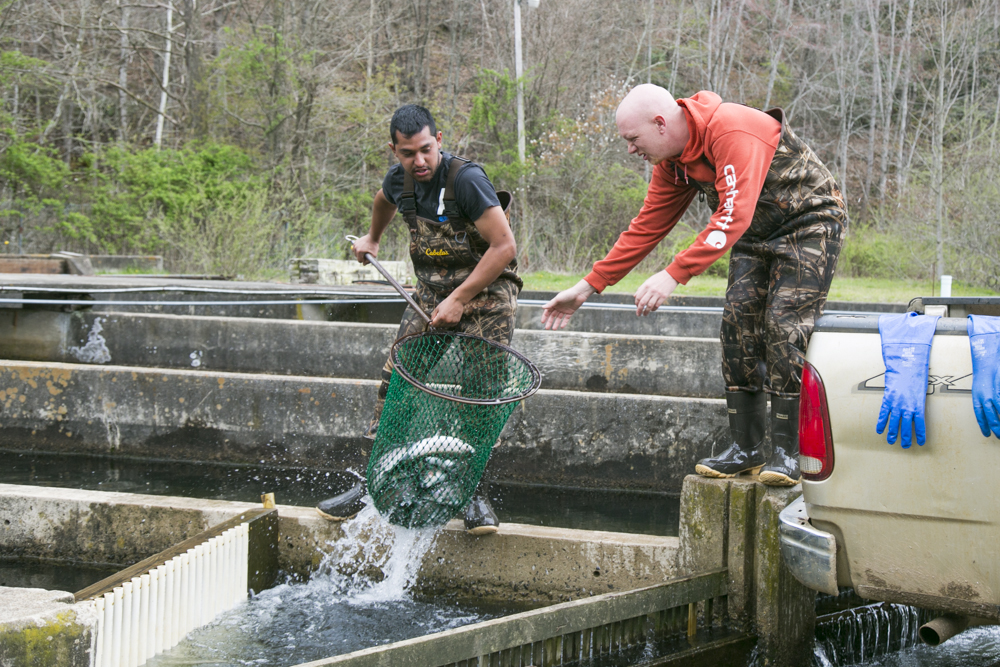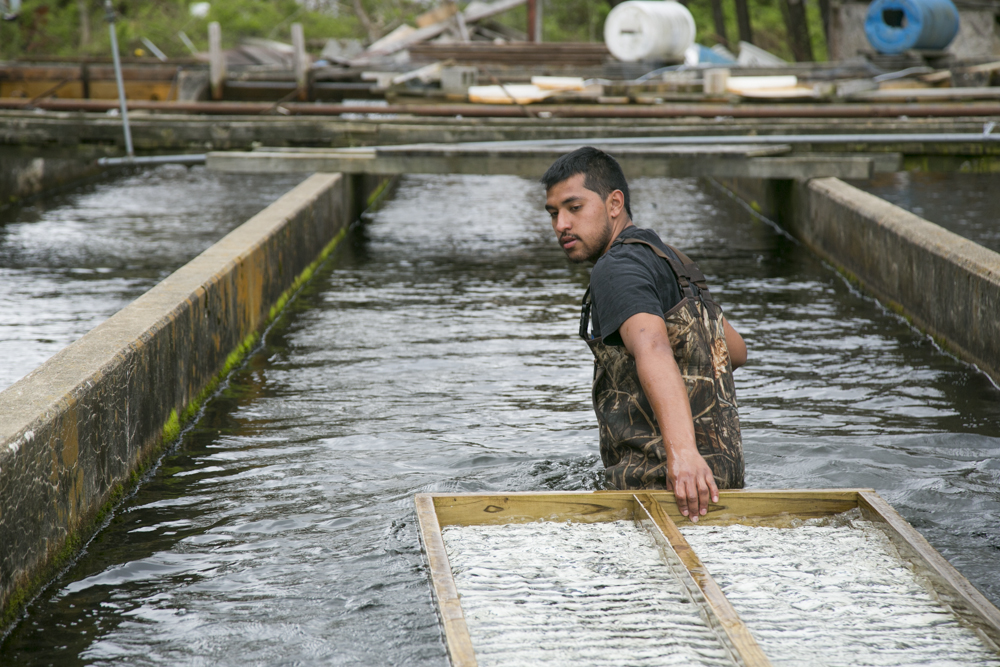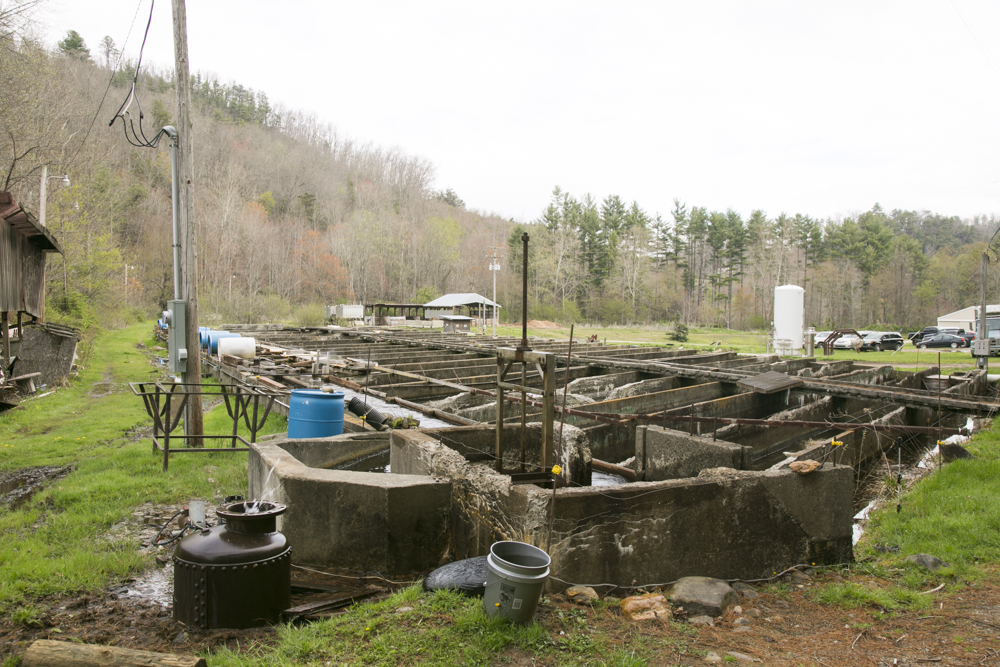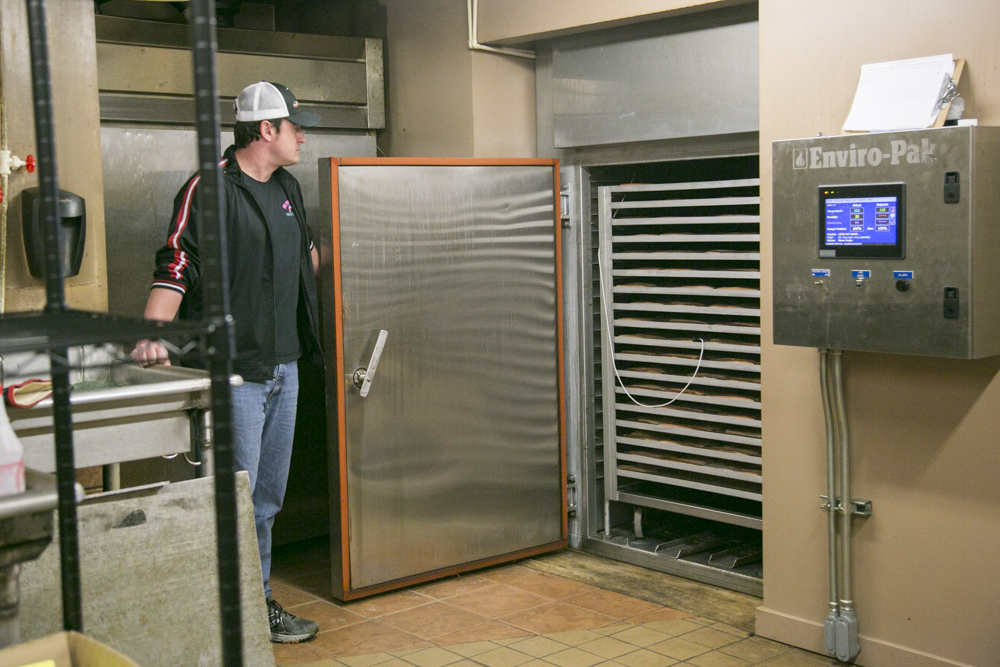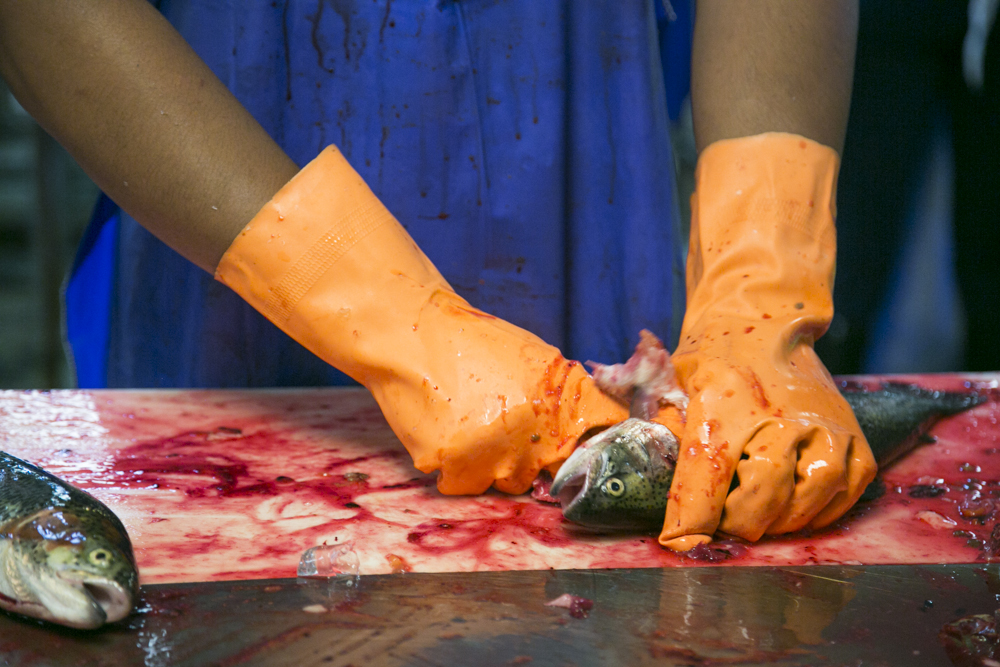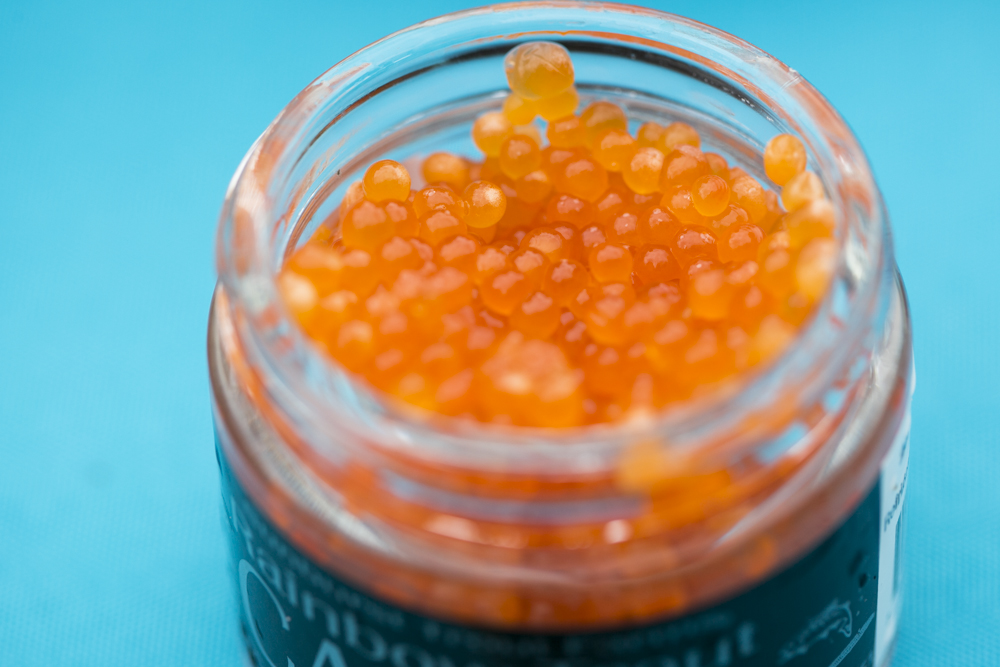Mesclun Greens, Radish, and Hot Smoked Trout with Horseradish Cream Dressing
Sally Eason’s Smoked Trout Salad
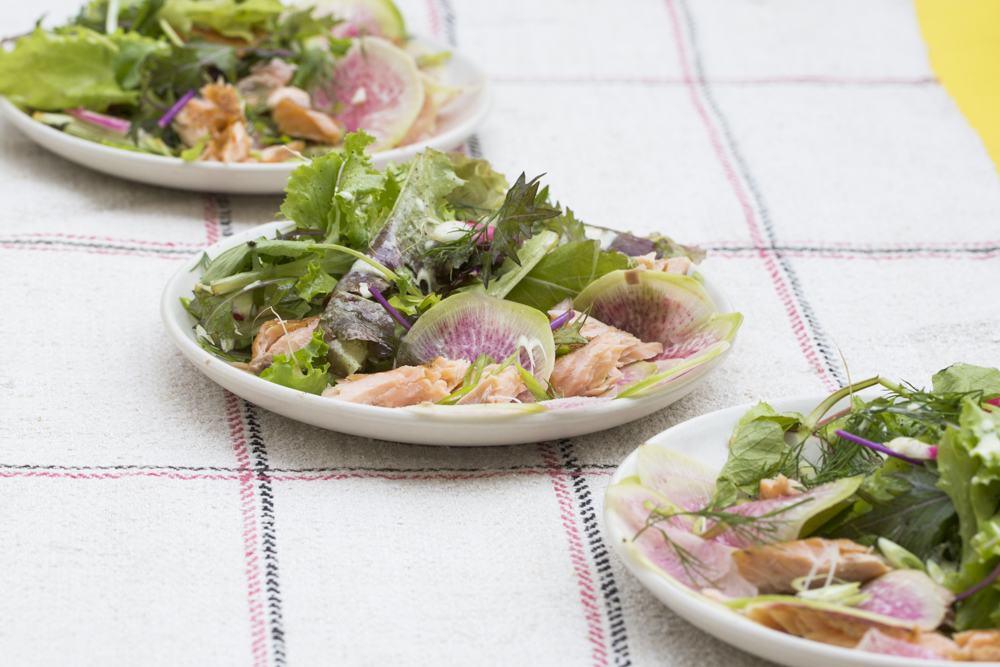
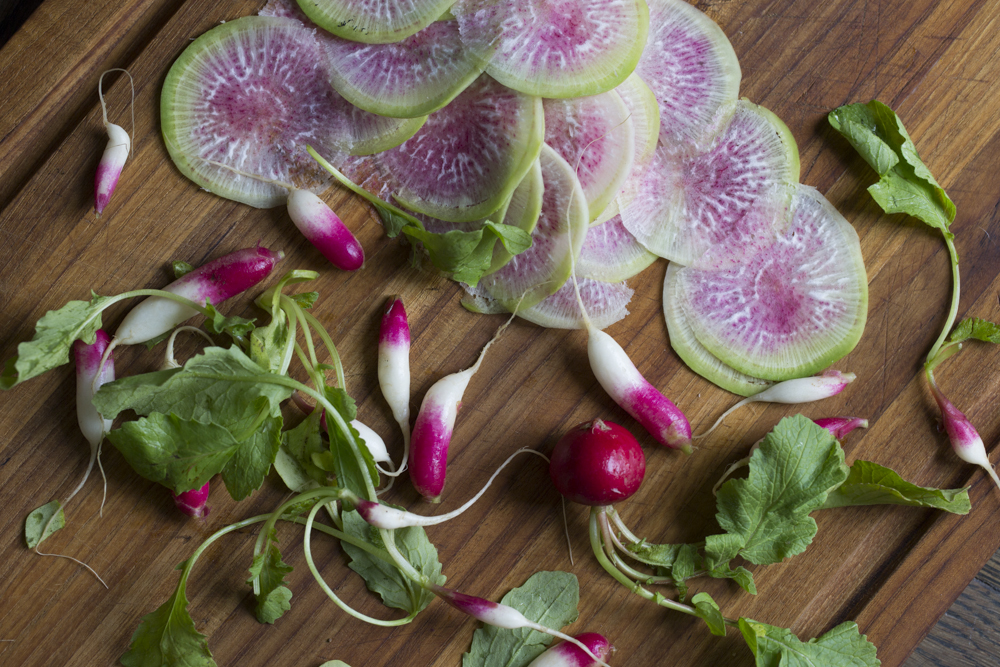
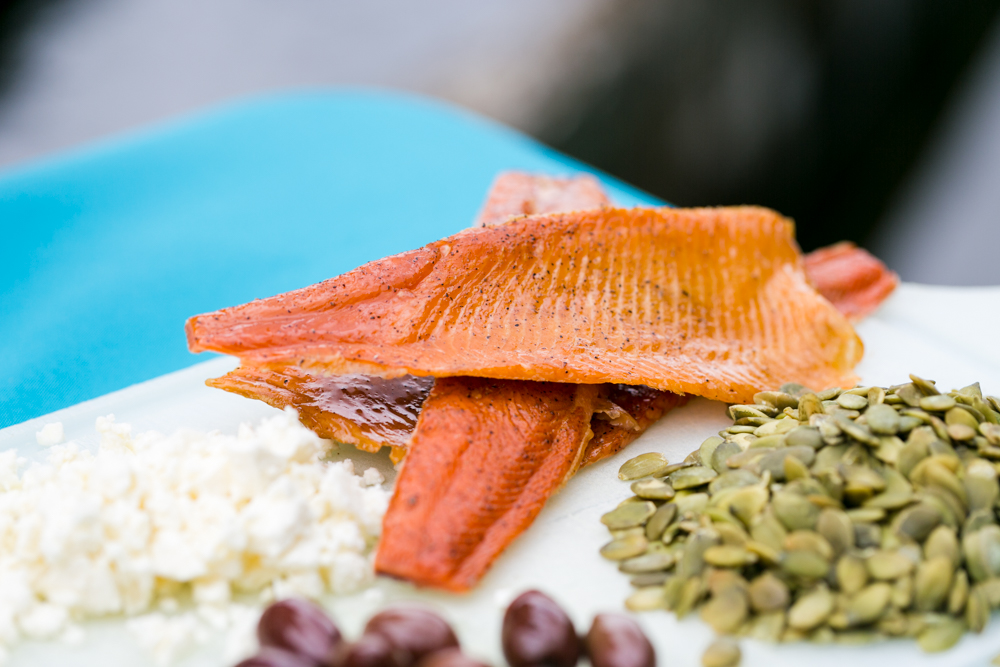
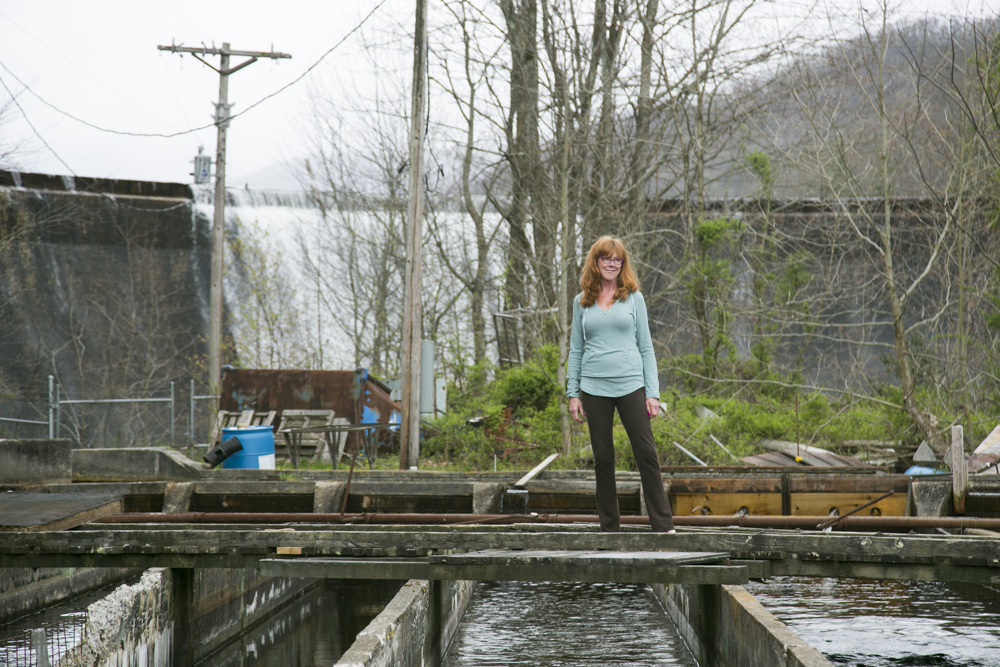
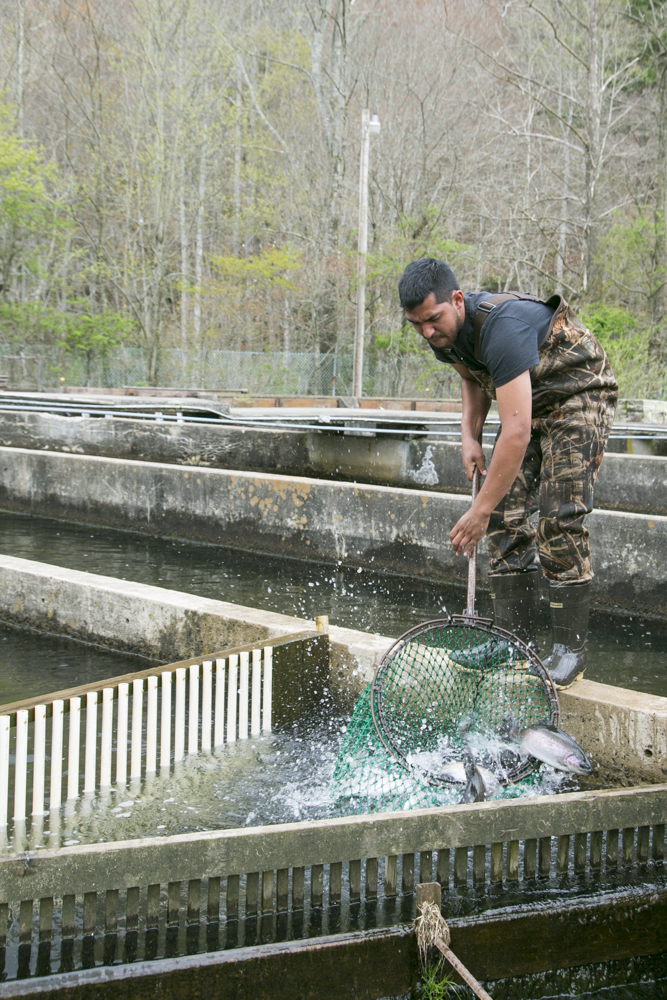
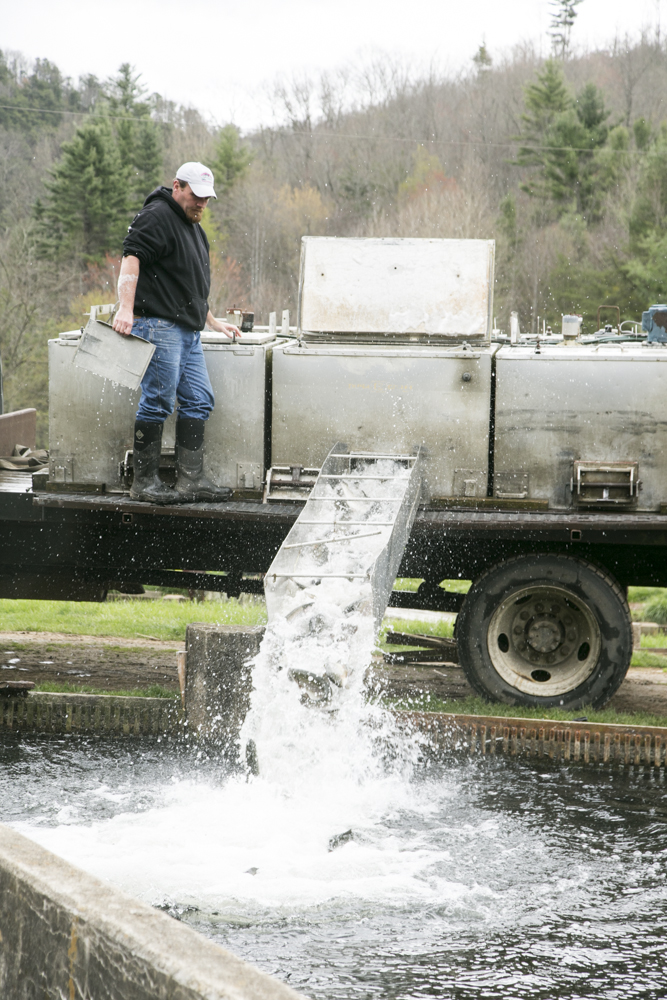
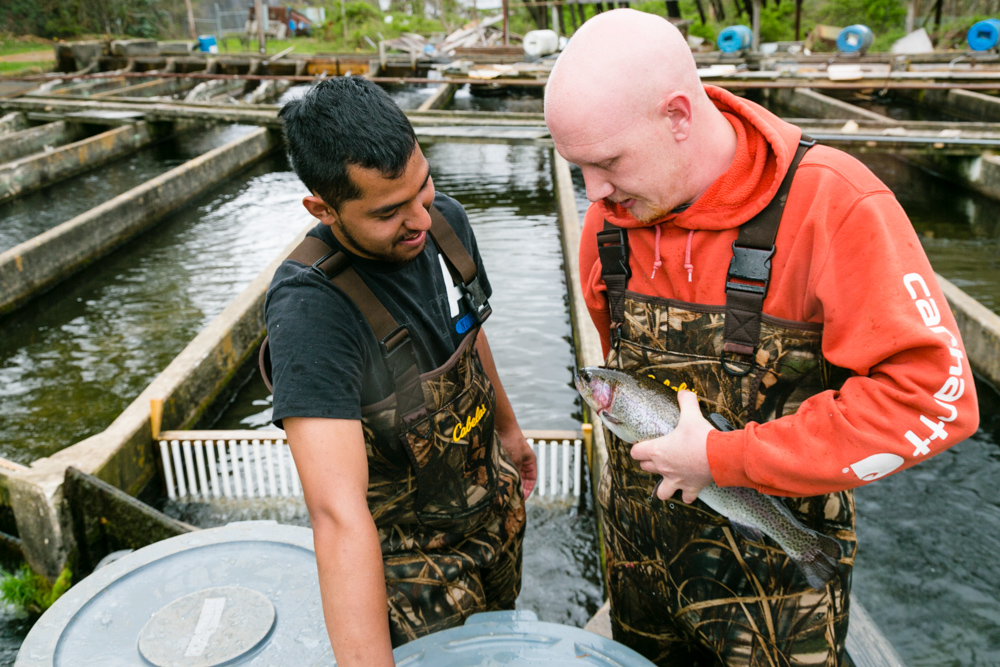
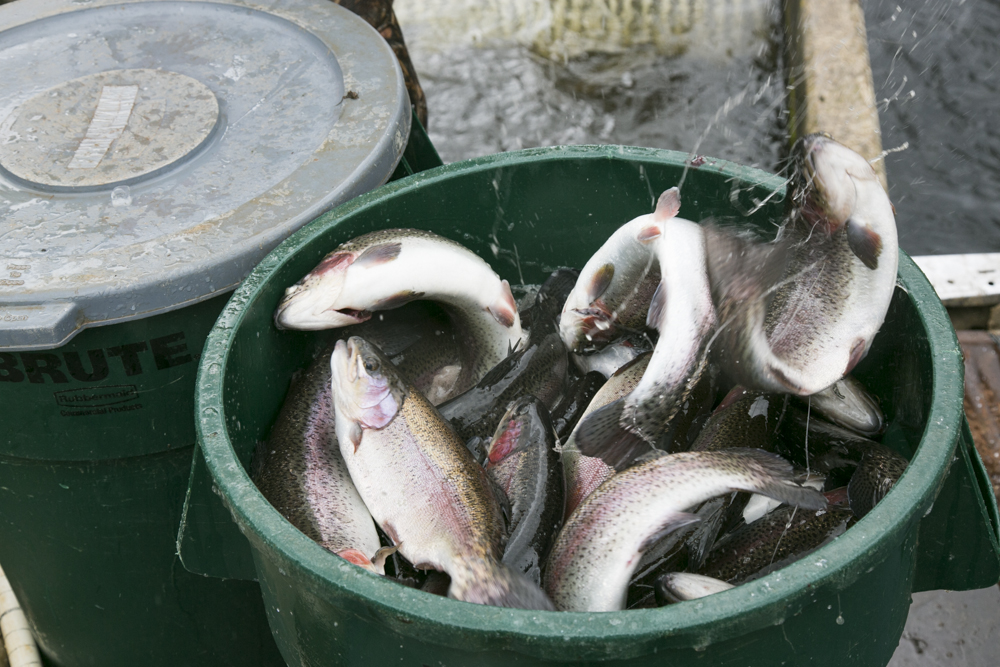
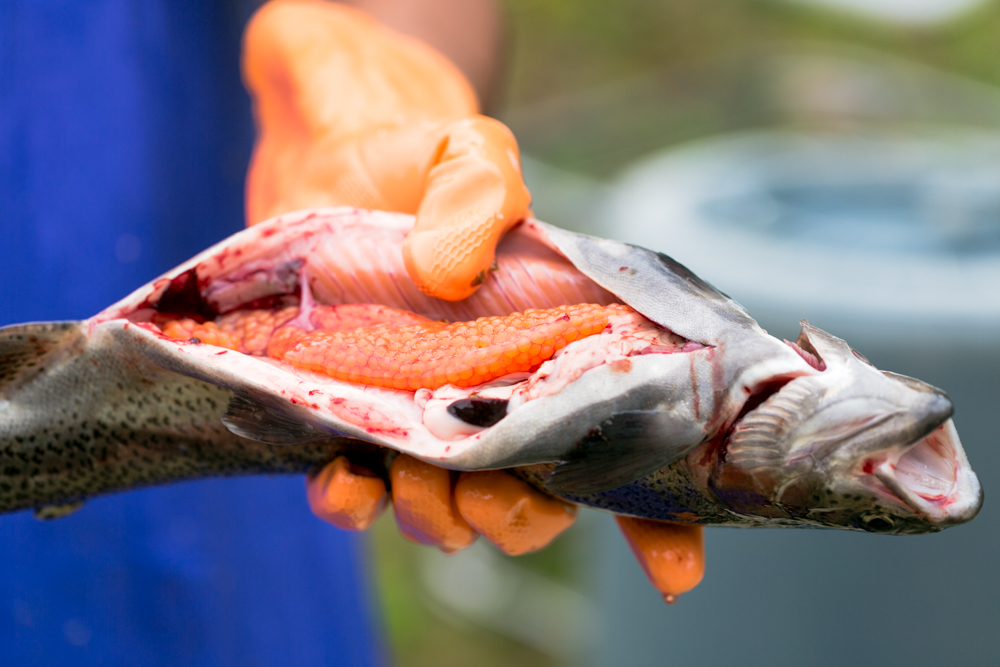
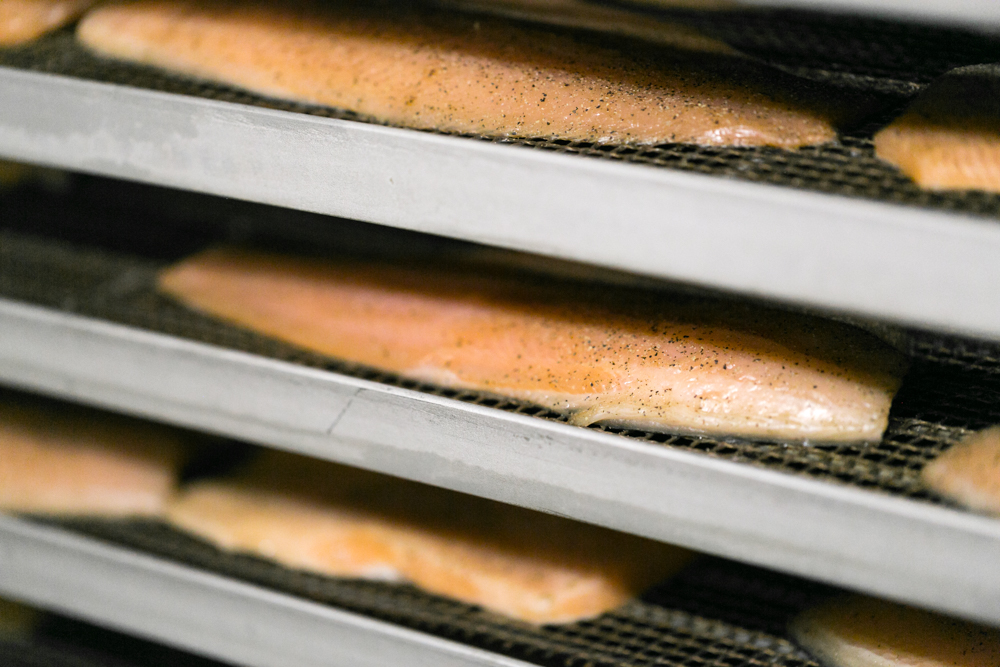
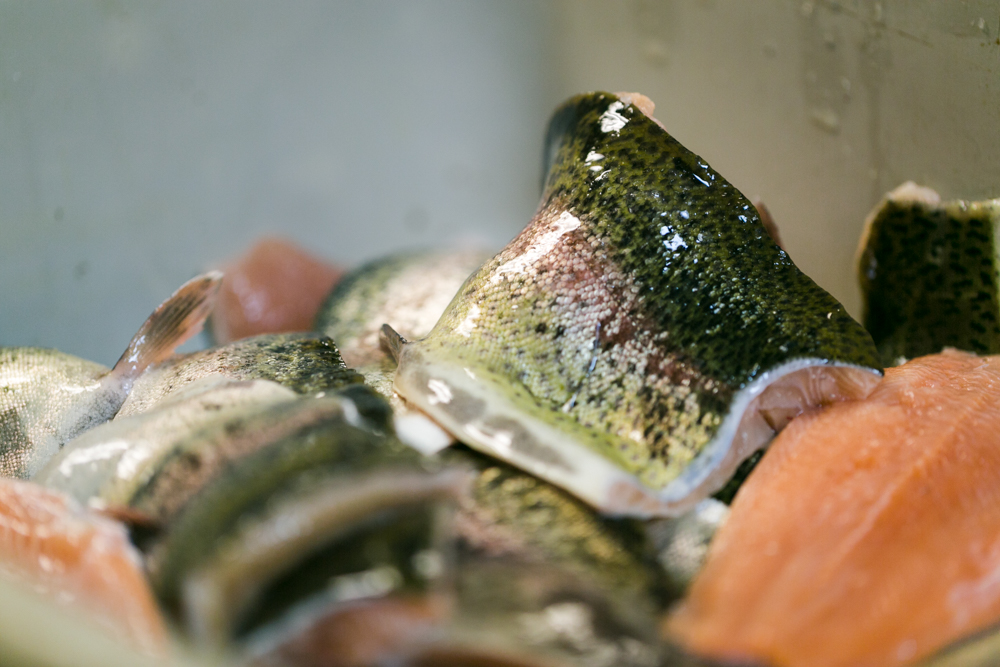
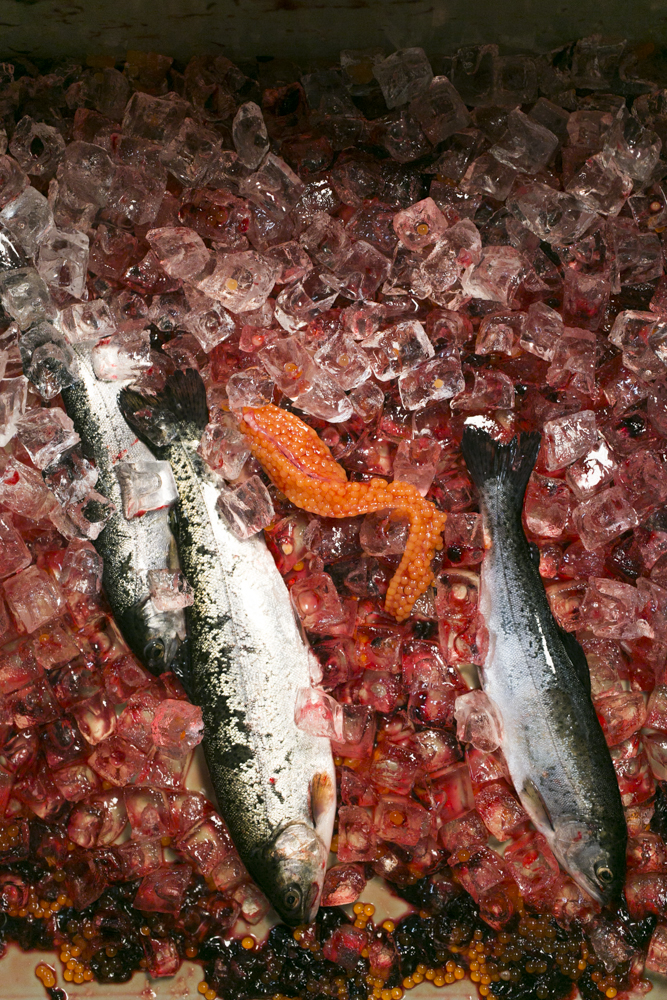
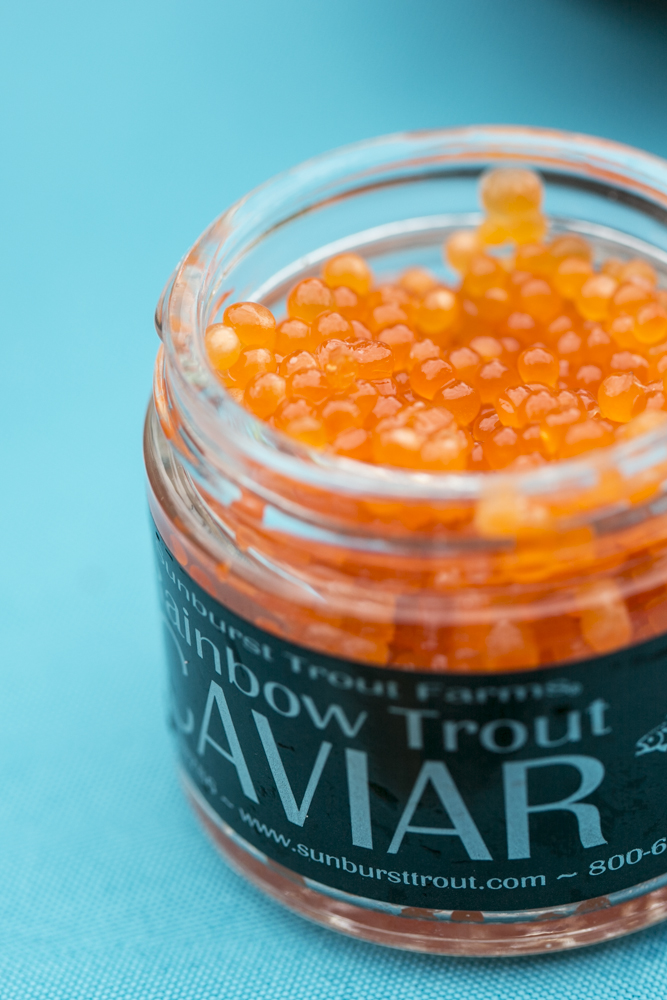
POSTED UNDER
- SPRING
INGREDIENTS
- dill,
- horseradish,
- mesclun greens,
- radish,
- smoked trout
NOTES
No clue how much your greens weigh? Count on there being a healthy handful for each guest. If you can’t find Sunburst Farms smoked trout near you, substitute with hot-smoked salmon. Unlike cold-smoked salmon, which has a tendency to feel slick and dense, hot-smoked salmon is lighter and meatier, while retaining plenty of flavor. This is because the hot smoking process cooks the fish, which changes its texture. Cold-smoked fish maintains its “raw” characteristics after it’s been cured, making it better suited for appetizer spreads or piled on a bagel.
RECIPE
DIFFICULTY
EASY
SERVES
4
PREP TIME
10 MINS
Dressing
-
1tbscrème fraîche
-
2tspprepared horseradish
-
2tbsolive oil
-
Juice of 1/2 lemon
Salad
-
10ozmixed greens
-
1bunchtiny red radishes, greens left on if in tact
-
1smallwatermelon radish
-
1packageSunburst Farms Carolina smoked trout
-
1green onion, chopped
-
1tbsFresh dill (optional)
-
Splash of sherry vinegar
-
Splash of olive oil
-
sea salt and black pepper
POSTED UNDER
- SPRING
INGREDIENTS
- dill,
- horseradish,
- mesclun greens,
- radish,
- smoked trout
Nothing excites me more than the examination of a process, a window into how things are made. I like to know how computers are put together, how glass is blown, or in the case of Sunburst Trout Farms, how a teeny-tiny fish egg makes its way to your salad plate.
Sally Eason, the owner of Sunburst Trout Farms, lives outside of Asheville, North Carolina. She is a pioneer of sustainable aquaponics and has managed to take a family business and create the best cold and hot-smoked trout on the market. The Pisgah National Forest abuts her property, and she has every intention of minimizing her impact on the environment that serves her. The fresh water from the nearby dam flows into a 24-track raceway system where her trout are raised on sustainable food. Sally’s team harvests over 1,000 pounds of trout a day. Each fish is then hand-split in search of coveted trout caviar. Only 2% of the fish will have roe inside, which explains why caviar is so pricey. The heads are removed and the tiny bones are plucked from the flesh with tweezers until every last one has been removed before going into the smoker. I hung out with Sally long enough to witness the entirety of this process. Not an ounce of flesh went to waste (the extra bits are scraped from the bones and made into fish jerky, and the skeletons sent off to make Grade-A compost).
For someone who is so closely linked to the highest tier of chefs and food purveyors, Sally is down-to-earth and unafraid to don a hairnet and get her hands dirty.
Sally Eason In Her Own Words
Julia: Your father started this trout farm. Why trout?
Sally: Dad came from Pittsburgh to his grandfather’s land in western North Carolina when he was a child. It got in his blood. He left Yale after one year and headed south to try his hand at trout farming. Why? He loved the outdoors and the idea of farming on this beautiful land.
Back then, he raised fish for stocking purposes. Now, we raise fish for upscale restaurants with discerning chefs across the country, as well as high-end grocery stores/markets.
JS: Did you always know you would end up in the family business?
SE: Not at all. I was a pediatric nurse on maternity leave after my third child when Dad asked me to come help him with payroll; his bookkeeper had quit without notice. That was the fall of 1985, thirty years ago. I’ve been here ever since.
JS: It must be exciting to see your fish re-imagined in so many different ways. What are some of the best interpretations you’ve had?
SE: With over four hundred chefs serving our trout across the country, it’s difficult to name one favorite, but I can name a couple. One would have to be a dish prepared by my good friend, Katie Button, at her restaurant Cúrate, in Asheville. It’s called “Esqueixada de montaña”, a local version of a classic Catalan dish. It uses Sunburst Farms trout sliced thin and served raw with tomato fresco, black olive, sweet onion, and lemon vinaigrette.
Another would be when Jacques Pepin came to do a “Chefs Afield” series with Sunburst in 2004. After the shoot, he cooked for my whole family. He served trout stuffed with herbs, preceded by a crisp potato pancake slathered with crème fraiche and “iced” with a ridiculous amount of Sunburst Trout caviar.
JS: When did you create the whole operation at Lonesome Valley? Was the high-end hospitality business something that comes naturally to you?
SE: Lonesome Valley was my Dad’s original trout farm. It wasn’t until 2006 that my siblings and I made the decision to develop with an environmental conscience, which segued into an opportunity to incorporate high-end dining into the property. It was a natural transition.
JS: Can you explain your aquaponics venture? How is it the wave of the future?
SE: In the last two years, my children have taken over the function of managing Sunburst Trout. I started “Sunburst Chef and Farmer” with my former research and development chef from Sunburst, Charles Hudson. The new company is not connected to Sunburst Trout, but we did borrow the “Sunburst” name to draw the connection to our longtime association with the food world.
Sunburst Chef and Farmer is an aquaponics company which will farm fish and plants symbiotically. The system uses 90% less water than terrestrial farming, and the grow period is much shorter. A nitrification process transforms fish waste into usable nitrogen for the plants. It is compact, can be done vertically, and sets up indoors. It’s the most efficient way to farm. Aquaponics is reducing the risk factor of farming in a way we’ve never seen before.
JS: What do you do when you are not working?
SE: My work doesn’t feel like work – when I am working, I am playing at what I enjoy most. But I do love to run, to read, and to travel.
